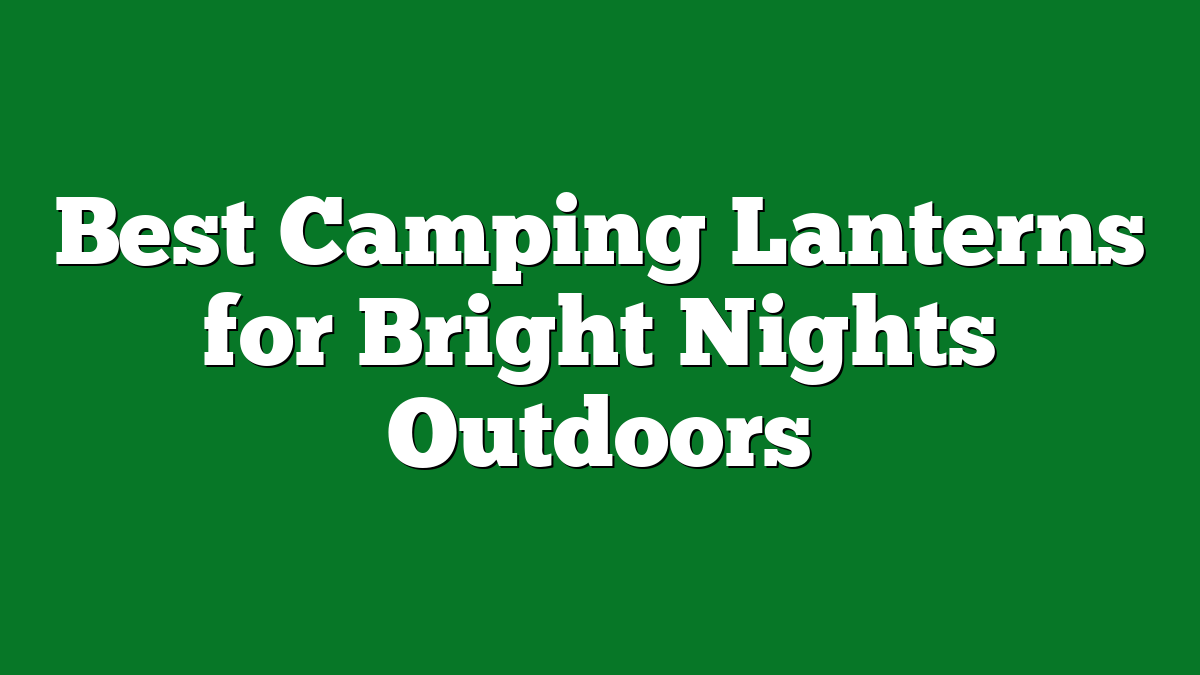Camping is one of my favorite ways to unwind and connect with nature, but it comes with its own set of challenges—especially when it comes to food. Nothing ruins a great outdoor adventure faster than spoiled meals or unwanted critters raiding your supplies. That’s why knowing how to store food safely at camp is essential for a successful trip.
Importance of Food Safety While Camping
Food safety while camping prevents spoilage and keeps wildlife at bay. I’ve learned the hard way that improper food storage leads to bad experiences, like dealing with unwanted animal visitors. Keeping food secure and fresh ensures a smooth and enjoyable trip.
Properly storing food reduces the risk of foodborne illnesses. Bacteria thrives in warm, moist environments, especially if food’s not handled correctly. I always pack food in airtight containers and keep perishables in a cooler to minimize any risks.
Deterring wildlife is another critical aspect of food safety. Leaving food out not only invites animals but can also create dangerous situations. Using bear canisters or hanging food from trees at least 10 feet off the ground and 4 feet away from the trunk helps keep campsites safe.
Maintaining food safety also contributes to reducing waste. I plan meals ahead, taking only what I need. By managing portions well, I limit leftovers that can spoil. Any waste I do create, I pack out rather than leave behind.
Understanding the significance of food safety while camping leads to a better outdoor experience. It allows me to focus on enjoying nature instead of worrying about food issues.
Essential Supplies for Safe Food Storage
When camping, having the right supplies for food storage makes a noticeable difference in keeping food safe. Here are the essentials I always pack for my trips.
Coolers and Ice Packs
Coolers are crucial for storing perishable items. I opt for insulated coolers with thick walls, which hold ice longer. When selecting ice packs, look for reusable ones that fit well within your cooler to maximize space. Always keep cooler doors closed as much as possible to maintain a low temperature. Utilize the bottom for ice and the top for food, ensuring it stays chilled.
Airtight Containers
Airtight containers prevent air and moisture from spoiling food. I choose durable, BPA-free plastic or glass containers with secure lids, keeping snacks and meals fresh. Label containers for easy identification. Using smaller containers for specific portions helps minimize waste and works great when meal prepping for the trip.
Food Safety Thermometers
Food safety thermometers are a must when cooking outdoors. I use digital thermometers for quick and accurate readings. They help ensure foods reach safe internal temperatures, preventing foodborne illnesses. Aiming for 165°F for poultry and 145°F for other meats keeps everyone safe and healthy on the trip.
By taking these supplies along, I enjoy my time in nature without worrying about food safety.
Best Practices for Storing Food at Camp
Storing food properly while camping is vital to avoid spoiling and unwanted wildlife encounters. Following best practices ensures a successful and enjoyable outdoor experience.
Proper Temperature Guidelines
Maintaining the right temperature for food storage is crucial. I keep perishable items below 40°F (4°C). Using a good-quality cooler helps with this task. I fill my cooler with ice and check the temperature regularly. Hot foods, like cooked meats, should cool to room temperature before heading into the cooler. I avoid leaving perishable food out for more than two hours, especially in warm conditions. If I’m in a remote area without electricity, I pack food that doesn’t require refrigeration, such as canned goods, dried fruits, and nuts.
Organizing Food by Type
I find that organizing food by type makes meal preparation easier and reduces waste. I separate raw meats from fruits and vegetables to prevent cross-contamination. I use clear, labeled containers for easy identification. For dry goods like pasta and rice, I store them in sturdy bags to keep them safe from critters. I also keep snacks nearby, so I don’t rummage through my cooler every time I get hungry. Keeping food organized enhances my camping experience by minimizing fuss and maximizing time spent enjoying the great outdoors.
Tips for Avoiding Food Contamination
Keeping food safe while camping plays a vital role in enjoying your outdoor adventures. Follow these tips to minimize the risk of contamination.
Cleanliness and Hygiene
Maintain cleanliness to prevent foodborne illnesses. I always wash my hands with soap and water before handling food. If soap isn’t available, I use hand sanitizer with at least 60% alcohol. Use disinfectant wipes to clean surfaces where I prepare meals, like tables or cutting boards.
Make sure to pack separate utensils for raw and cooked foods. I often bring a sponge or cloth specifically for washing dishes to avoid cross-contamination. Rinse my camping cookware thoroughly after each use and let it air dry. Keeping my cooking area clean not only protects my food but also enhances the overall camping experience.
Handling Raw vs. Cooked Foods
Separate raw and cooked foods to minimize contamination risks. I always store raw meats at the bottom of my cooler to prevent juices from dripping onto other items. Using color-coded containers helps me keep track of what’s raw and what’s cooked.
I handle raw meats with designated utensils and wash them immediately after use. It’s essential not to leave cooked food out for more than two hours, especially in warm weather. I keep cooked meals in airtight containers and place them in the cooler right after cooking. This practice protects my meals and ensures I can enjoy fresh, safe food throughout my trip.
Conclusion
Camping is all about enjoying the great outdoors and making lasting memories. By taking a few simple steps to store food safely, I can focus on what really matters—relaxing and soaking in nature. Whether it’s using airtight containers or keeping perishables in a cooler, these practices help me avoid unwanted surprises and keep food fresh.
I’ve learned that a little planning goes a long way. By organizing my meals and keeping everything clean, I can minimize waste and ensure a safe dining experience. So next time I head out to the wilderness, I’ll remember that safe food storage is key to a happy camping trip. Happy camping everyone!











